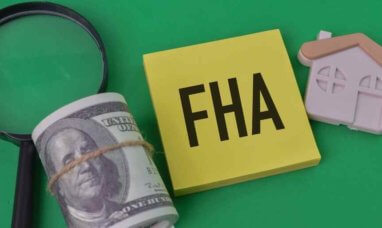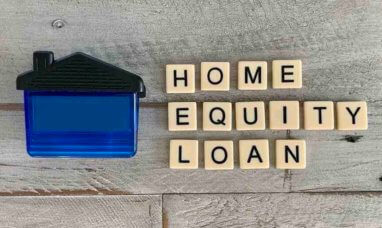The Home Affordable Refinance Program (HARP) was established by Congress in 2009 to provide relief to homeowners who owed more than their home was worth, provided they held a Fannie Mae or Freddie Mac mortgage.
This program was established specifically to help homeowners who had very little equity and high loan-to-value (LTV) ratios, which prohibited them from obtaining traditional mortgage financing.
The program ended in 2018, and many homeowners are now looking for HARP replacement loans and refinance programs that will provide options for homeowners with little or no equity.
Why You Should Consider HARP Replacement Options
When you first closed on your current loan, you were most likely in a much different situation than you are today.
The program was designed to get homeowners out of a tough situation, so the rate and terms are generally not ideal.
With rates near all-time lows and a streamlined documentation process available, the time may be right to look at a new Fannie Mae and Freddie Mac refinance program.
When HARP was discontinued, it was replaced with Fannie Mae’s high loan-to-value program, and Freddie Mac enhanced relief refinance, or what is known as the FMERR home loan program.
Whereas HARP was designated specifically for homeowners underwater, these new loan programs are designed around applicants with high LTV who would otherwise not qualify for low rates based on little or no equity.
High-LTV Refinance Program Eligibility
High-LTV loans are pretty much your only option if your mortgage balance remains close to the value of your home. Through FMERR enhanced relief programs and Fannie Mae’s high-LTV option, a borrower can meet eligibility requirements even with a high LTV that would prevent traditional financing.
Freddie Mac and Fannie Mae have eligibility requirements that are very similar. However, you must remain with the GSE that originally funded your loan. So, if you funded your current loan with Fannie Mae, you cannot qualify for the Freddie Mac high-LTV loan program.
Fannie Mae High Loan-To-Value Refinance Program
This new program is designed to help homeowners refinance with little or no equity in their homes. Even if your LTV remains high, if you are current on your mortgage payments, this refinance option can help you refinance into a better mortgage.
If you currently have mortgage insurance, you would not be required to get a new policy, it will simply transfer over to the new program. Also, eligibility documentation concerning income, assets, and employment is less stringent than conventional lenders require.
Eligibility Requirements
-
-
- Must have an existing Fannie Mae note dated on or after October 1, 2017.
- Must have at least a 15-month gap between your original HARP note and a Fannie Mae high-LTV note.
- Must be current on your payments, with no 30-day delinquencies over the past six months, and no more than one 30-day late payment over the past 12 months.
- Your current mortgage must have been financed through Fannie Mae’s Refi Plus Mortgage, DU Refi Plus, or HARP refinance program.
-
What is FMERR Refinance Program?
This refinance option is very similar to Fannie Mae’s program in that it allows borrowers with little to no equity refinance into a better loan. The program is a good fit if you have a Freddie Mac loan, you are current on your payments, and are unable to obtain traditional financing because of a high LTV ratio.
As with the Fannie Mae program, you will not have to purchase new mortgage insurance, as your existing mortgage insurance policy would transfer.
Unlike HARP, where you could only refinance one time, you can use the FMERR program as many times as you like to refinance your home. However, if you previously refinanced under HARP, you cannot use the FMERR program to refinance your home.
Eligibility Requirements
-
-
- Must have an existing Freddie Mac mortgage note dated on or after November 1, 2018.
- Must have at least a 15-month gap between your current note and the FMERR refinance note.
- Must be current on your payments, with no 30-day delinquencies over the past six months, and no more than one 30-day late within 12 months.
- Your mortgage must not have been previously financed through HARP.
-
Advantages of Applying for a High-LTV Refinance
Whether you choose the Fannie Mae high-LTV program or the FMERR program to cut your mortgage down, both options offer a solution to not being able to qualify for traditional financing.
Unfortunately, if you have little or no equity, you have few options for traditional financing that offer a decent interest rate. However, if you’ve kept current on your payments and have stable income, the Fannie Mae and Freddie Mac high-LTV programs can provide a solution.
Each of these high-LTV programs has streamlined standards for documentation of income, assets, and employment that you won’t get with conventional lenders, with eligibility requirements that make it easier for a more diverse group of borrowers to qualify.
While you may have an easier time qualifying based on the simplified application process, you may not get a better rate than conventional lenders can offer.
However, with little or no equity, both the Fannie Mae high-LTV option and the Freddie Mac enhanced relief refinance program provide solutions to homeowners with unique needs.
How to Get Help
-
-
- Determine if your current mortgage note is a Fannie Mae or Freddie Mac loan. (You can determine which loan you have by using the Fannie Mae or Freddie Mac lookup tool on their website.)
- Determine your home’s value. Use a home valuation estimator or ask a local realtor to price your home. You can also use online valuation sites like Zillow, Redfin, or Realtor.com.
- Calculate your LTV. Since both programs required a minimum LTV ratio, you must determine your ratios meet the qualification criteria before you apply.
- Shop for rates. While these government programs offer an excellent option for homeowners with little or no equity, there may be other programs available from direct lenders that offer better rates. Look around and choose the best option for your unique financial situation.
-
Featured Image: Twenty20








